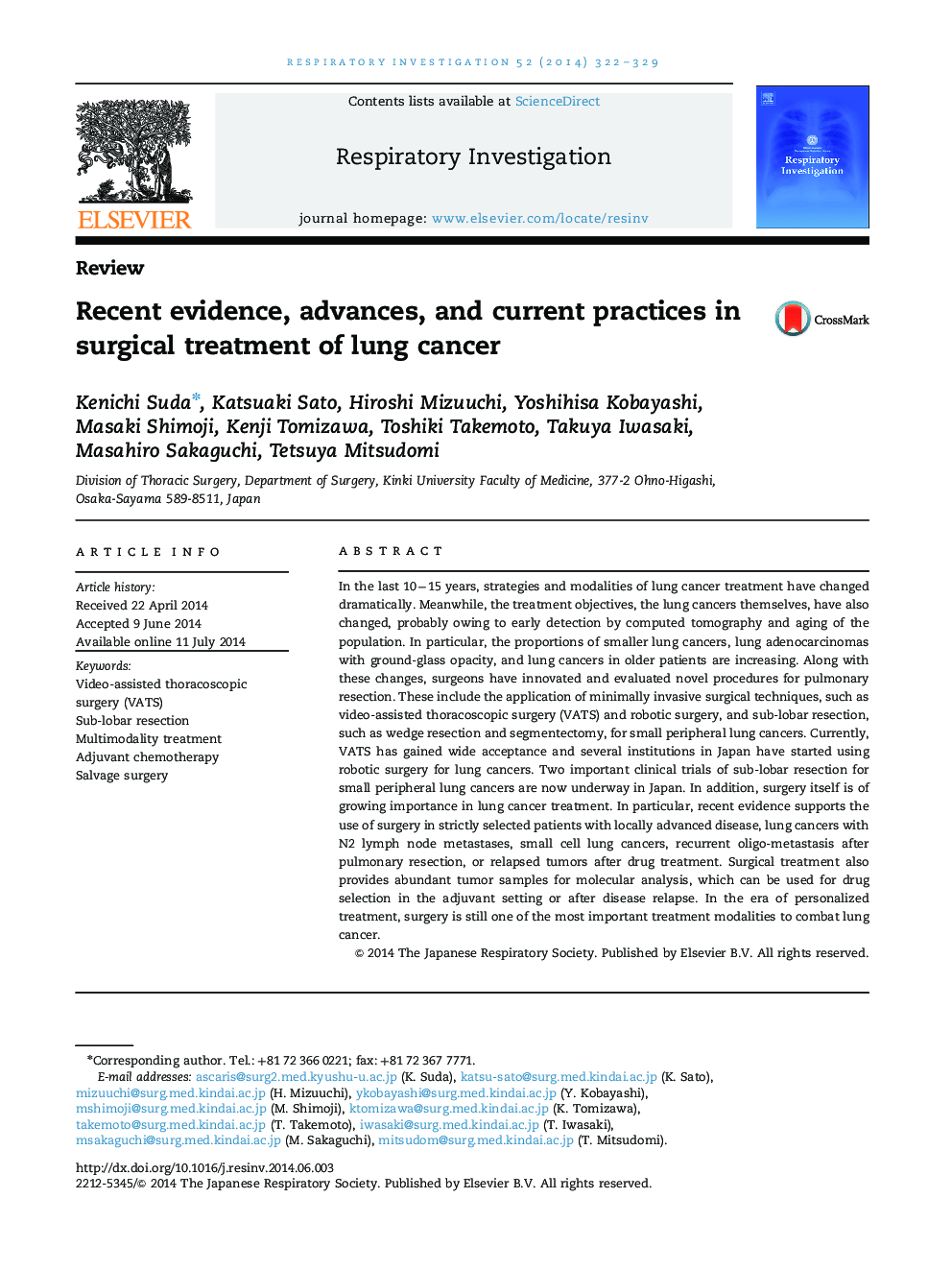| Article ID | Journal | Published Year | Pages | File Type |
|---|---|---|---|---|
| 10172022 | Respiratory Investigation | 2014 | 8 Pages |
Abstract
In the last 10â15 years, strategies and modalities of lung cancer treatment have changed dramatically. Meanwhile, the treatment objectives, the lung cancers themselves, have also changed, probably owing to early detection by computed tomography and aging of the population. In particular, the proportions of smaller lung cancers, lung adenocarcinomas with ground-glass opacity, and lung cancers in older patients are increasing. Along with these changes, surgeons have innovated and evaluated novel procedures for pulmonary resection. These include the application of minimally invasive surgical techniques, such as video-assisted thoracoscopic surgery (VATS) and robotic surgery, and sub-lobar resection, such as wedge resection and segmentectomy, for small peripheral lung cancers. Currently, VATS has gained wide acceptance and several institutions in Japan have started using robotic surgery for lung cancers. Two important clinical trials of sub-lobar resection for small peripheral lung cancers are now underway in Japan. In addition, surgery itself is of growing importance in lung cancer treatment. In particular, recent evidence supports the use of surgery in strictly selected patients with locally advanced disease, lung cancers with N2 lymph node metastases, small cell lung cancers, recurrent oligo-metastasis after pulmonary resection, or relapsed tumors after drug treatment. Surgical treatment also provides abundant tumor samples for molecular analysis, which can be used for drug selection in the adjuvant setting or after disease relapse. In the era of personalized treatment, surgery is still one of the most important treatment modalities to combat lung cancer.
Keywords
Related Topics
Life Sciences
Immunology and Microbiology
Immunology and Microbiology (General)
Authors
Kenichi Suda, Katsuaki Sato, Hiroshi Mizuuchi, Yoshihisa Kobayashi, Masaki Shimoji, Kenji Tomizawa, Toshiki Takemoto, Takuya Iwasaki, Masahiro Sakaguchi, Tetsuya Mitsudomi,
